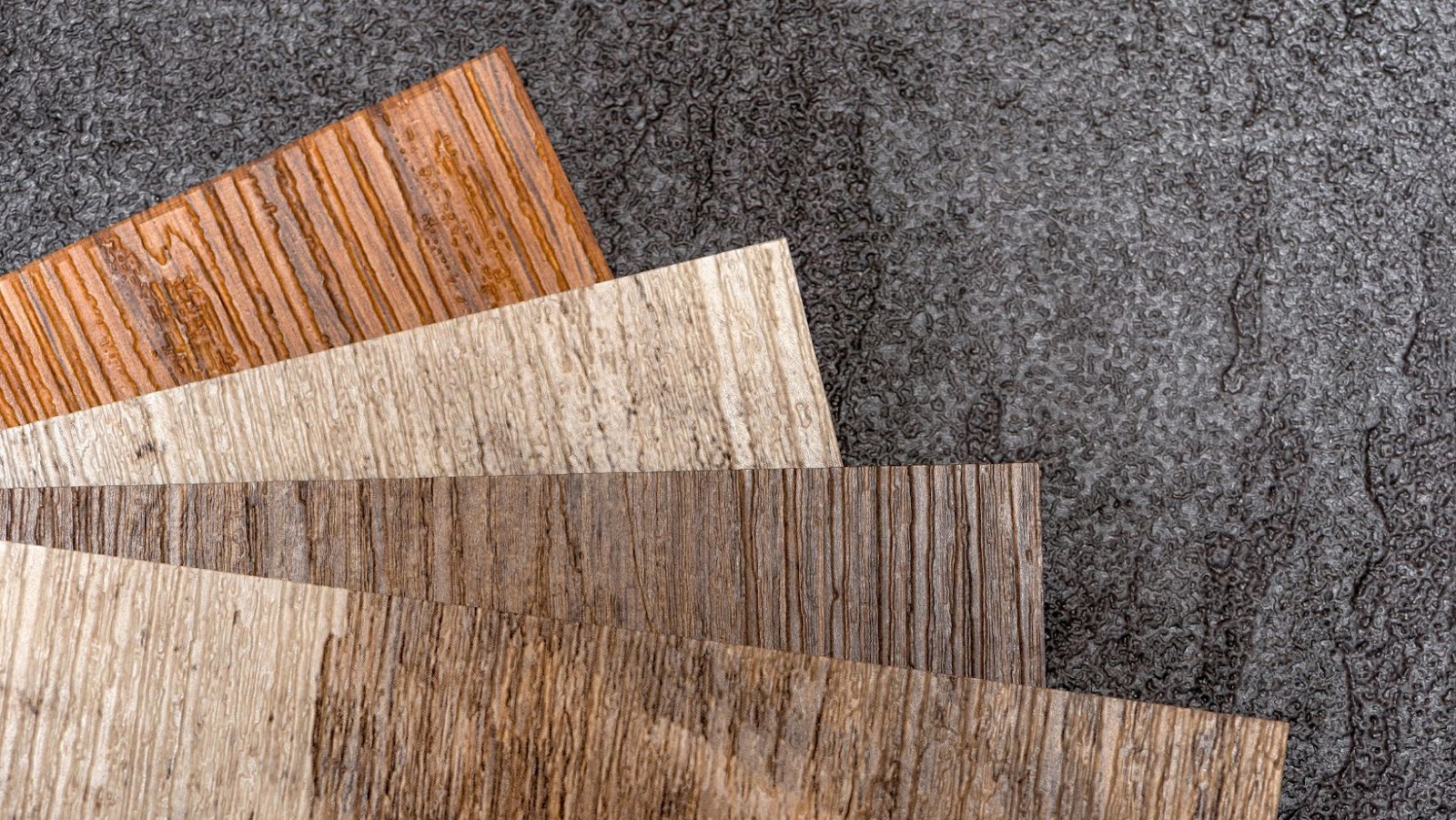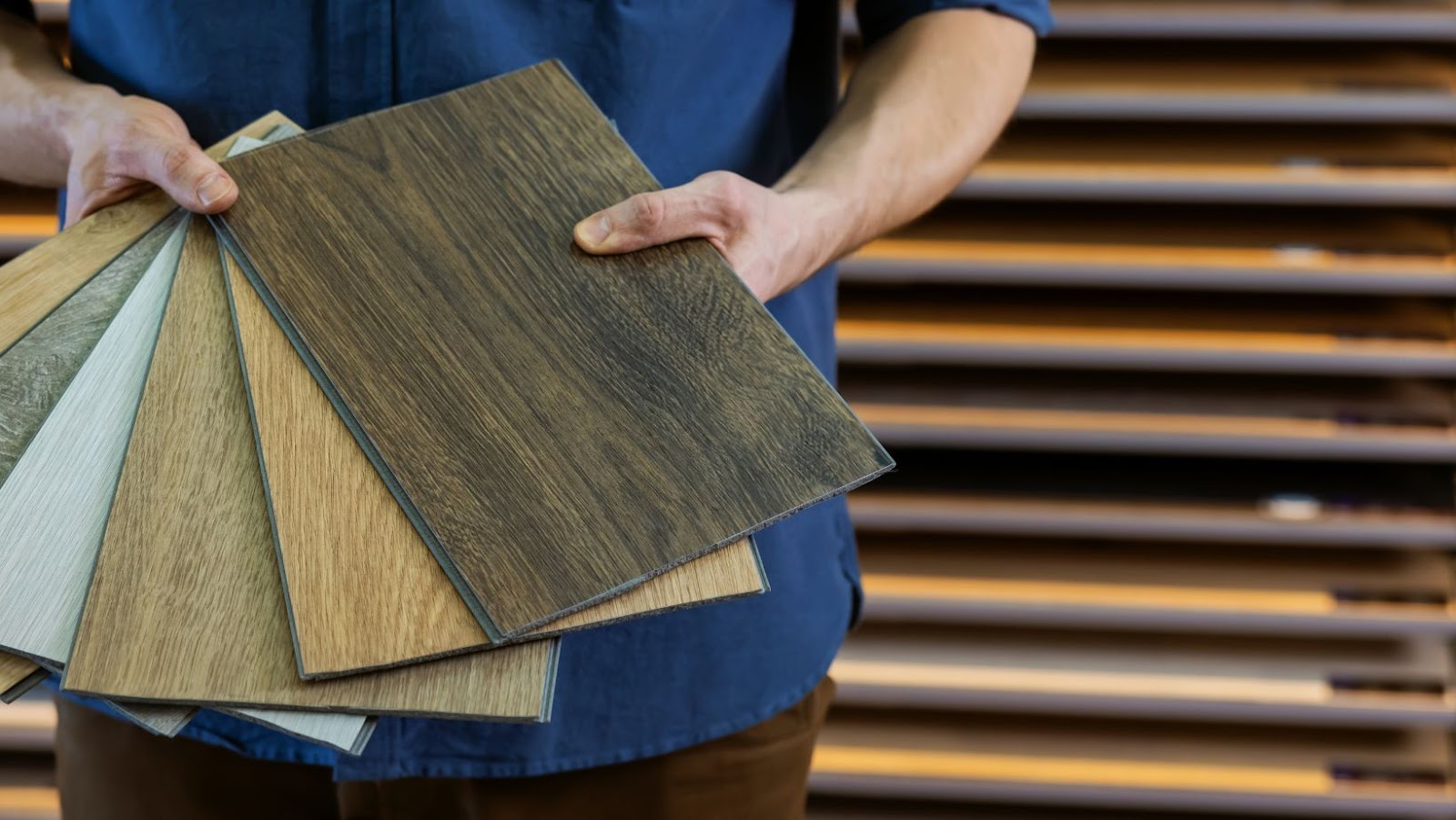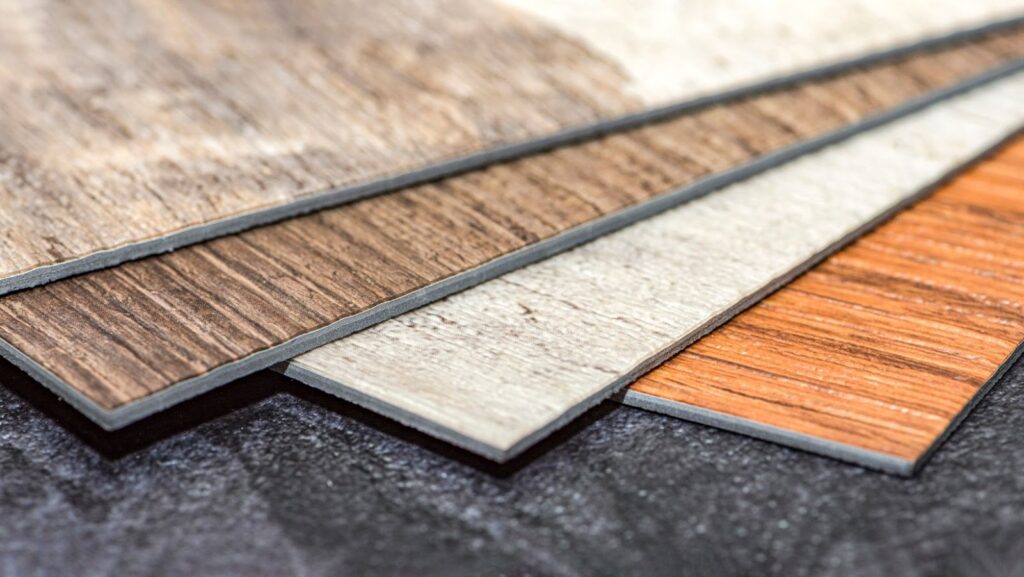How to get scratches out of vinyl flooring
Keeping your vinyl flooring looking as good as new requires some regular maintenance and cleaning. There are a few simple steps you can take to prevent scratches on your vinyl flooring. In this article, we will go through some tips for preventing scratches on your vinyl flooring, as well as how to get scratches out of vinyl flooring.
Sweep and vacuum regularly
Cleaning and maintenance of your vinyl flooring is essential for keeping its surface looking like brand-new. One of simplest and most effective ways to prevent scratching on your vinyl floor is by sweeping up dirt and debris regularly. Use a soft bristled broom or an electrostatic mop to sweep, being sure to cover every part of the floor lightly. Vacuum cleaning can also be used, especially around the edges where dirt and grit may accumulate, as an attachment with a soft brush is great for this activity.
If you have pets, you should vacuum more often—especially near their bedding—to avoid their fur from becoming embedded in the wax that coats vinyl floors. Additionally, steam cleaners can be used on more heavily soiled areas; however, it’s better to keep steam off your vinyl floors.
Mop regularly with a non-abrasive cleaner
Regular cleaning will help protect your vinyl from dirt and grime that can accumulate over time and lead to scratches if not removed. Mopping your floors with a non-abrasive cleaner at least once a week is the best way to keep them looking their best. Make sure to wring out your mop to reduce the amount of water on the floor, as too much moisture can cause discoloration or warping.
If possible, use a mop that is specifically designed for vinyl floors. It should have soft material around the edges so it won’t catch or drag on the surface and cause scratches.
Place mats and area rugs at entrances
To prevent scratches on vinyl floors, consider using area rugs or mats at entrance points. The rugs provide a buffer for dirt, debris and sand that can scratch the floor when someone walks over it. Choose natural fiber rugs that have a strong thread count for maximum durability and protection. Make sure to vacuum the rugs regularly to prevent dirt from accumulating and causing possible damage.
Place mats outside of showers and inside tubs to catch any drops of water that could cause slips or falls while also providing added protection against scratches. If you decide to use furniture glides on chairs or other pieces of furniture, make sure they are designed specifically for vinyl floors. This will ensure the glides don’t damage the surface of the flooring.
Protective Measures
One of the best ways to prevent scratches on your vinyl floors is to take precautionary measures. This means putting mats or rugs over high-traffic areas, such as entryways, hallways and kitchens. You can also place Self-Adhesive Felt Pads on the legs of furniture. This will reduce the chances of scuffing and scratching your vinyl flooring.
Additionally, it’s important to clean up spills quickly. By taking these protective steps, you can keep your vinyl floors looking great for years to come.
Install door mats at all entrances
Installing door mats at all entrances, such as near entryways or in foyers, can help limit scratches on vinyl floors. By using door mats to collect dirt and debris from shoes, you can significantly reduce the number of dirt and grit particles that get tracked onto vinyl floors. These small, abrasive particles can scratch or scuff the surface of your vinyl floor when they are walked on.
Before selecting a door mat for your home entranceway, consider the type of material it is made out of and whether that material will scratch your flooring when stepped on. A good rule of thumb is to select a mat with a coarse texture so it can effectively remove dirt from shoes. Additionally, choose a darker-colored mat so dirt won’t be as visible. Finally, inspect the door mat after using to verify it isn’t causing any scratches or abrasions before removing it to be cleaned.
Place furniture protectors on the legs of furniture
Furniture protectors are one of the most effective ways of protecting your vinyl flooring from scratches and other damage. Soft pads, felt or rubber can be easily applied to the legs of furniture to prevent unsightly marks on your flooring.
Make sure you:
- Clean the area after attaching protectors to chairs and tables.
- Regularly tighten or replace the protectors if necessary.
- Regularly check the feet of any heavy furniture, as these items can cause significant damage to vinyl floors if not given attention.
- Place hard plastic caps underneath furniture such as outdoor grills and stoves; these also provide additional protection when moving furniture around.
Place felt pads on the legs of furniture
Felt pads are an important part of protecting your vinyl floors from scratches. Begin by placing felt pads on the legs of furniture that might be moved such as tables, chairs, sofas, dressers and other furniture. These pads will not only absorb the brunt of the impact with the floor but also provide a smoother transition when moving around furniture on your vinyl floors.
Felt pads come in a variety of colors and sizes so you can easily find ones that match your furniture legs. They are also relatively inexpensive, making them an affordable addition to any home’s floor protection arsenal.
It is also important to check these pads regularly as they can become worn or come off over time. If this happens, replace them right away to maintain maximum effectiveness in protecting your floors.

Repairing Scratches
Scratches on your vinyl flooring can be an eyesore and can also have an impact on the overall appearance of your home. Fortunately, with the right resources and supplies, you can repair and prevent scratches on your vinyl flooring.
This guide will outline the best methods to repair and prevent scratches on your vinyl flooring:
Use a vinyl scratch repair kit
If you don’t want to replace your vinyl flooring, or at least a portion of it, you can repair minor scratches on it by using a specialized vinyl scratch repair kit. These kits are relatively inexpensive and can be found at most home improvement stores.
Most repair kits contain an abrasive material that acts as a filler for the scratch and helps to match the color of the existing flooring. This material comes in multiple colors and can be mixed together to create the exact shade needed, if necessary.
In addition to the abrasive filler, you’ll need some other tools such as scissors or scissors-like tools and glue specifically designed for repairing vinyl flooring. Some kits even come with a rag for removing dirt and residue from the scratch prior to filling.
Once you have all of your tools prepared, follow these steps:
- Apply adhesive remover to any loose debris in or surrounding the affected area, lightly sand the area prior to application of adhesive remover if necessary.
- Fill in the scratch with filler using one of your pre-prepared tools then apply firm pressure for about one minute allowing sufficient time for drying before allowing weight on top of it.
- Once dry, lightly buff up any excess filler with a damp cloth.
- Add wax or polish over entire surface according to instructions provided by flooring manufacturer (before waxing/polishing ensure that product is specifically compatible with your Vinyl Floor type).
By following these steps carefully you should be able to effectively hide most minor scratches on your vinyl floors!
Use a wax-based furniture polish
Using a wax-based furniture polish is one of the best ways to help prevent scratches on vinyl floors. Wax-based furniture polish provides a protective layer on the surface of the vinyl and removes dirt that can cause scratches in both real and artificial floors. It is important to note that wax-based products are not suitable for use on shells and finishes such as satin or matte.
It is also important to periodically vacuum, sweep, or mop any dust or debris that accumulates on your vinyl floors as it can accumulate in corners and edges, leading to scrapes when walked over. Additionally, you should take extra care when using tools like scooper vacuums or steam cleaners as they can damage your floor’s finish if used inappropriately.
You may also wish to consider adding rug pads underneath any throw rugs you have placed on the floor as they are designed to protect your floor from scratches. These pads add friction between the underside of the rug and the surface of the vinyl floor, which helps protect against scratching due to movement. It is important not to use pads with rubber bottoms on your vinyl floors, however – these types of pads can discolor your vinyl over time.
Finally, you may want to consider sealing your vinyl floor with a special sealant before its first use in order to create an extra level of protection from scratches and other damage caused by everyday wear and tear. Sealing your floors will help protect them for years to come!
Use a vinyl floor repair kit
If you have unsightly scratches in your vinyl floor, there are a few easy steps you can take to repair them at home without calling in a professional. Begin by cleaning the scratch area with mild soap and warm water. Allow it to dry completely.
Next, purchase a vinyl floor repair kit at your local hardware store. It will include an applicator for touching up the filled-in area and special fillers of various colors to match the surrounding surface. Carefully choose a color that is closest to the original flooring, or mix two different colors until you get a suitable match.
Once you have selected the proper filler color, use the applicator to apply it into the scratch area, filling it in until it’s even with the surrounding surface. Let it dry on its own or gently blow over it with low heat from a hairdryer if necessary. If needed, use steel wool or fine sandpaper to help blend everything together until smooth before applying any polish coatings that may be required in your repair kit instructions.

Preventative Tips
Investing in regular cleaning and maintenance of your vinyl floors is the best way to keep them looking new and scratch-free. Whether you have glossy or matte vinyl floors, it’s important to take steps to prevent scratches in the first place. This article will discuss some strategies to reduce the risk of scratches on your vinyl floors and maintain their beautiful appearance.
Avoid dragging furniture across the floor
Furniture can easily scratch up your vinyl flooring. When trying to avoid this, it is not only important to have furniture with felt protectors on the feet, but also to avoid dragging them across the floor when possible. Try lifting furniture if at all possible, or using heavy-duty plastic sliders or moving pads in order to ensure your flooring is protected. This is especially important with any heavier furniture such as couches and tables that might cause more deep scratches and permanent damage.
Following these tips will help you ensure your vinyl floors remain untouched by unsightly scratches:
- Have furniture with felt protectors on the feet.
- Avoid dragging furniture across the floor.
- Lift furniture when possible.
- Use heavy-duty plastic sliders or moving pads.
Use a damp mop or cloth to pick up dirt and debris
Using a damp mop or cloth is an effective method for picking up dirt and debris from your vinyl floor. In order to avoid damaging the surface, you should avoid using abrasive sponges, metal brushes, and scouring powders.
When damp mopping, you will want to start by sweeping the floor and then follow with a light mist of liquid cleaner or water. Immediately wipe up the area with a damp cloth and then dry it completely. This method is most effective when used regularly to keep dirt from collecting and scratching your floor.
Remove shoes before walking on the floor
Removing shoes before walking on your vinyl floors is an important preventative tip to help keep them looking their best. The soles of shoes, as well as pet paws, can scratch the surface of vinyl and make it look dull. It only takes a few seconds to remove your shoes or have everyone using the floor slide into some slippers before entering high-traffic areas.
Other tips for preventing scratches include:
- Sweeping frequently with broom bristles specially designed for vinyl floors or a vacuum cleaner with a soft brush head attachment.
- Using felt protectors under furniture legs.
- Placing protective casters on chairs and stools.
- Keeping pets nails trimmed and groomed regularly.
- Installing area rugs in entry ways, near eating areas and where you spend the most time in your home.


More Stories
Home Care Agency Services: Beyond Personal Care
Add Some Personality into Your Home with Creative Designs
Types of Fire Alarms: Selecting the Ideal Solution for Your Safety